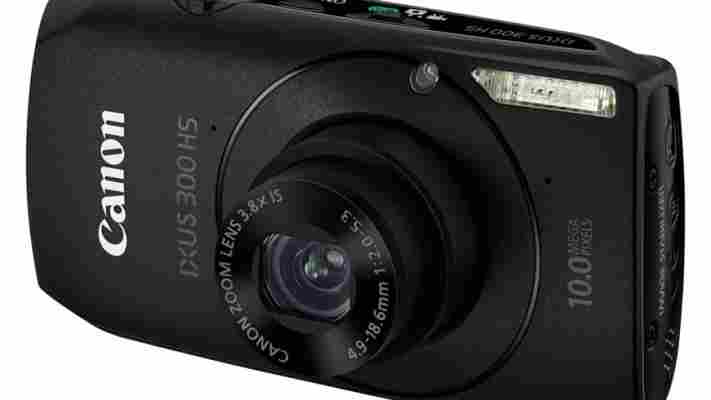Ixus cameras are undeniably sleek, but comparisons with Canon’s own PowerShot range risks exposing them as an exercise in style over substance. This latest model aims to quell such aspersions with generous helpings of both. It’s a little heavier than other Ixus cameras but it looks and feels extremely luxurious. The LCD is a 3in widescreen and there’s an HDMI socket for HD playback. We particularly like the matt black paint job, although it did pick up a few scratches during testing.
Inside, there’s a 10-megapixel back-illuminated CMOS sensor and wide-aperture lens, both of which should help reduce image noise in low light. Meanwhile, the HS suffix comes from the fact that this sensor is much faster than the CCDs used in other Canon compacts. This allows the camera to capture video at 240fps, playing back at 30fps to give 1/8-speed slow motion. Compressing 240fps video to AVC format is hard work, though, which explains why these clips are limited to a tiny 320x240-pixel resolution. The standard video mode is much better, capturing attractive 1280x720-pixel footage at 30fps with stereo sound.
It’s not particularly quick at taking photos. We measured 2.4 seconds to switch on and shoot and 2.5 seconds between shots. The autofocus was the main culprit, taking around a second to lock onto subjects. Flash photography was better, with gaps of under six seconds between shots with the flash at full power. The 2.6fps continuous mode is excellent but we couldn’t reproduce the claimed 3.7fps speed.
While the 300 HS has the credentials to compete with enthusiasts’ compact cameras such as the Canon PowerShot S90 , operationally it’s very much a point-and-shoot model. The mode switch has just three options – Auto, Program and Video. The navigation pad doubles as a dial for adjusting settings but almost all photographic options require a trip to the menu.
It’s disappointing that the pad isn’t labelled. Clicking its top, bottom or sides accesses exposure compensation, macro, flash and display options, but the temporary on-screen graphic to advertise these functions is no substitute for proper labels. There’s a reasonable amount of photographic control including aperture- and shutter-priority modes, but no manual exposure or focus options. That’s no problem for casual snappers but this really isn’t a camera for those who like to tweak settings regularly.
Fortunately, the 300 HS took some beautiful photos on automatic settings. Colours were lush and a touch warmer than usual, especially in flash-lit skin tones, but the results were consistently flattering. Tricky lighting conditions such as high-contrast scenes and backlit portraits were handled elegantly, and there were hardly any duds in our hundreds of test shots.
Unlike other cameras we’ve seen with back-illuminated CMOS sensors, there was no discernable noise in brightly lit shots taken at the base ISO speed. Details weren’t as crisp as from other cameras at this price, such as the PowerShot S90, but the difference was pretty small. In low light, the back-illuminated sensor and wide aperture kept noise impressively low, but details were softer still – a side effect of noise-reduction processing.
These photos were better than those from most point-and-shoot cameras, but the difference wasn’t as big as we’d hoped. That’s partly because the Canon’s wide f/2 aperture is only available for wide-angle shots. Zoomed in, it narrows to f/5.3, which isn’t so remarkable. We also found that the automatic mode was overly cautious in its efforts to avoid blur, picking unnecessarily fast shutter and ISO speeds in low light.
